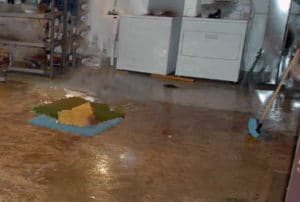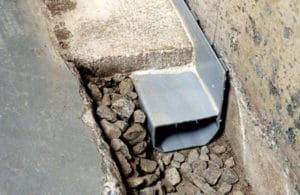Dan writes: In the process of selling our house, the buyer’s inspector reported that there was “active water” in the basement. We assume that it was found in the walls or floor. We almost never experience any visible water in our basement. Can you recommend a professional to come to the house and perform an evaluation. The evaluation needs to include a verification of the active water, a determination of any mold growth, and a path going forward to remediate it.

Steve Bliss, of BuildingAdvisor.com responds: Ask the inspector (or the buyer or realtor who hired him) for more information about the “active water” leakage. How did they determine that there is active leakage? Where did they detect leakage? What did they actually see or measure – for example, with a moisture meter?
No sense hiring someone to find and remediate the problem until you know what the problem is. Is your basement finished or unfinished? Mold is certainly a potential problem in a finished basement but rarely a problem in an unfinished basement. Are the basement walls concrete or block? Block has more potential leakage paths.
Possible sources of water are a plumbing leak, subsurface water such as seasonal high water table, or surface water from rain or melting snow that runs down the foundation walls and enters through cracks or joints in the basement walls. Poorly managed surface water is the most common source of basement leaks and usually is easy to fix. Often repairing gutters and downspouts to direct water safely away from the foundation does the trick. Adding splash blocks or conduits just below or at the ground surface can also help.
If the ground is sloped toward the foundation, rather than away, some regrading may also be necessary. Or a swale (shallow ditch) or drainage trench can sometimes be used to direct surface runoff away from or around the building.

Where nothing else will work, and water is entering through the basement walls or at the joint where the basement floor meets the walls, an interior drain system can be installed and connected to a sump pump. This requires cutting out a 6 in. strip of concrete around the basement perimeter to create a trench for an interior drain. In some cases, this is the only effective solution, short of excavating around the house, typically a much more expensive and disruptive option.
There are many companies that specialize in solving basement leakage. Avoid companies that sell a specific system that you probably don’t need. To get an independent inspection and recommended solution, you’ll need to hire a consultant with expertise in this area — typically an engineer (civil or geotechnical) or possibly an building contractor or architect. You need to find someone who works a lot with residential construction. Otherwise you may get a solution more appropriate for heavy commercial construction, with a price tag to match.
View all Basement Leakage Articles Q&A Index
Leave a Reply